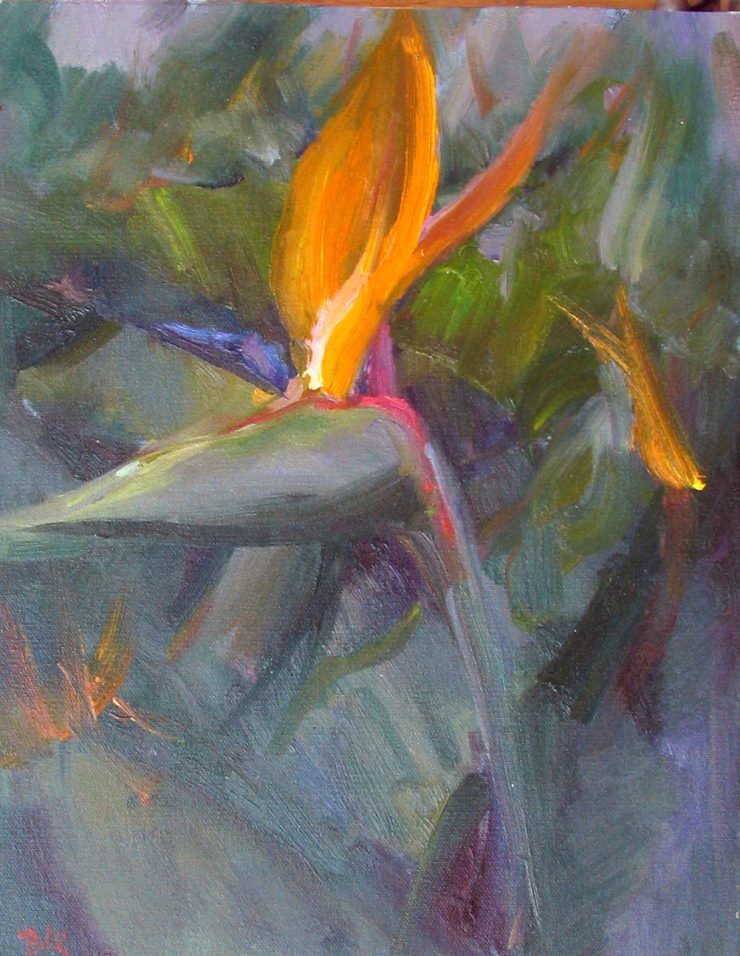There are several ways to emphasize the focal point or focal area in your painting. This key discovery shows you how to use contrast of temperature to focus the eye. In this painting the flower head, which is the focal point of the painting, is painted in warm colors; reds and oranges. This contrasts against the cool blue grays on the background.

What is temperature?
Temperature refers to the relative position of a hue on the color wheel. Colors associated with the heat of the sun and fire (yellows, oranges and reds) are considered to be a warm temperature; the colors we associate with cool things such as ice and water (mainly blues) are cool temperatures. Greens and violets have qualities of both.
A hue’s temperature is relative to other colors. One yellow may be cooler than another, just as some blues or reds are warmer than others. Cadmium lemon is a cool yellow, whereas cadmium yellow pale (or medium) is a warm yellow. Cadmium red light is a warm red and alizarin crimson a cool red. The warmest temperature color on the color wheel is a red-orange. The coldest temperature color is a pure blue (cobalt blue). This helps you determine whether a color is relatively warmer or cooler. Adding white to a color both lightens and cools it.

In this painting, the cliffs and clouds are painted in warm colors compared with the cool blues in the sky and sea, and the cool greens in the trees.
To learn more about using temperature and other compositional techniques to create focal points
To learn more techniques for emphasizing your focal points and focal areas such as directing lines, isolation, space division, one thirds, contrast of shape, contrast of saturation, and contrast of light and dark, see the Composition lessons in Workshop H of the Virtual Art Academy Apprentice Program.
